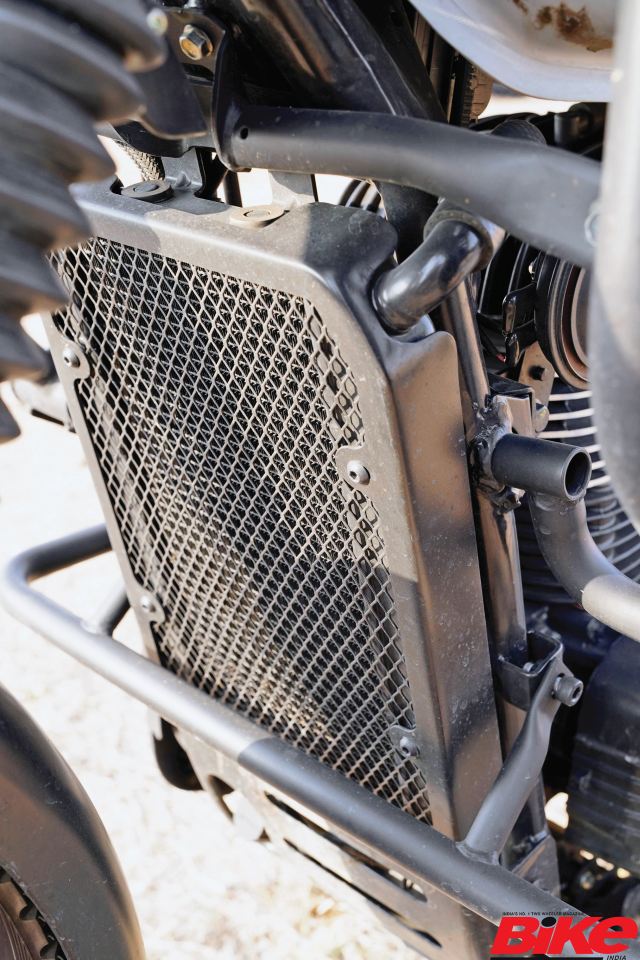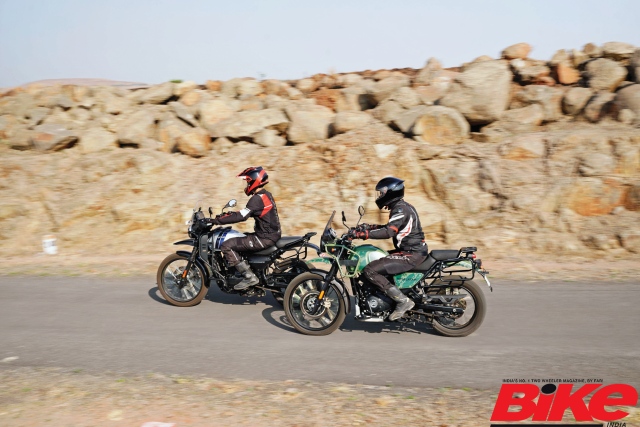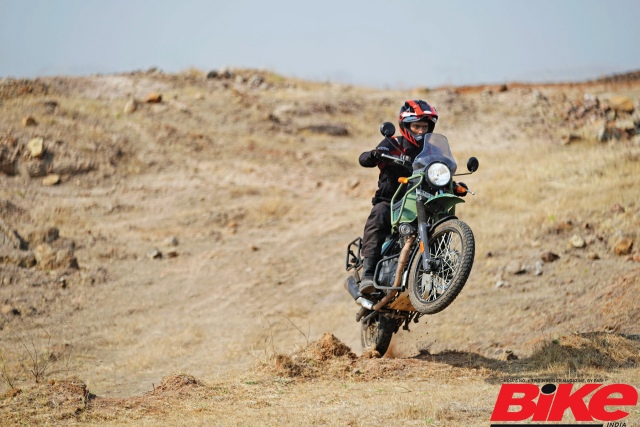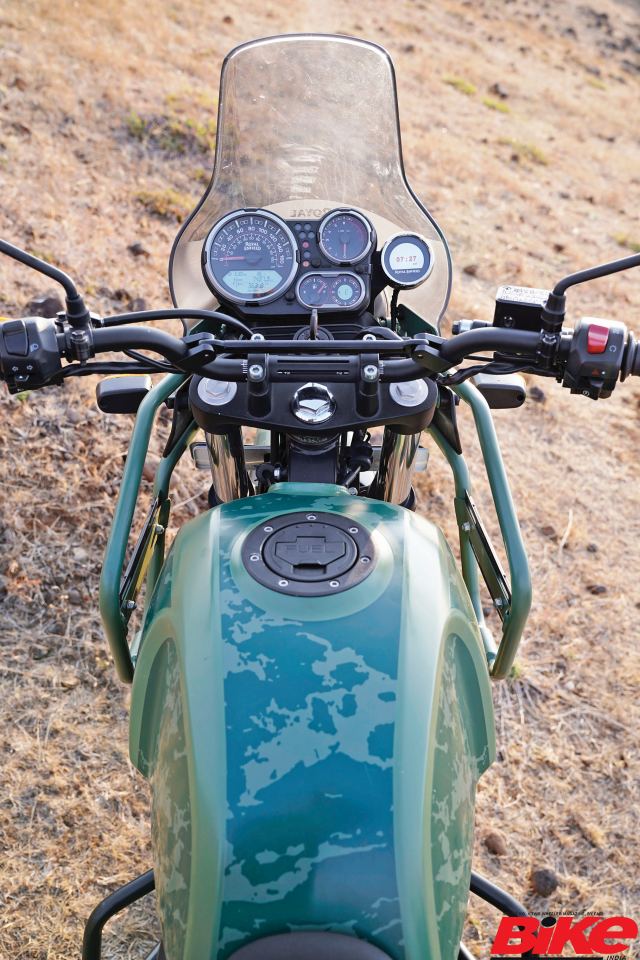The new Yezdi Adventure constantly finds itself being compared to the Royal Enfield Himalayan. We decided to settle this issue with facts and some overlooked perspectives.

Good competition leads to faster development and, ultimately, the customer is the winner. That is one of the reasons why comparative tests are crucial to further progress. It gives manufacturers and customers new perspectives on similar motorcycles. In that vein, this time we have pitted a motorcycle with proven credentials (over the years and over a few iterations) against a newcomer. Obviously, the former is the Royal Enfield Himalayan while the latter is the resurrected Yezdi brand’s new Adventure.

They say imitation is the best form of flattery. Then Royal Enfield must be tickled pink about how the Adventure has turned out. The Himalayan has been around for a few years and the Yezdi, a newcomer, has an almost identical design. Even so, the Adventure’s Himalayan-inspired form has received some crucial modern elements that set it apart as the newer motorcycle of the two. While the Himalayan uses LEDs only for the tail-lamp, the Adventure uses them all around. Unlike the Himalayan’s boxy fuel-tank, the Yezdi employs a curvier shape and has cocooned it in a rather large crash-guard that is noticeably bigger than the Himalayan’s.

Oil cooler for the Himalayan 
Radiator for the Adventure
On closer inspection, there are other key elements to tell them apart. The most obvious among them is that only the Adventure is equipped with a radiator. Popular opinion is that the styling is as functional as it is appealing and only personal preferences can make one decide between the two.
There is no getting around the fact that both motorcycles are tall: while the Himalayan has a seat height of 800 millimetres, the Adventure’s seat is taller at 815 mm. Interestingly, it is easier to swing a leg over the latter because its rear seat is not as high as the Himalayan’s and, once astride, the Yezdi’s soft suspension compresses enough for most riders to place both feet firmly on the ground. On that front, I would say that both motorcycles have broken even because the riding position is similar, too, with the Yezdi being the more comfortable option for the city and the easier to access for a pillion rider. The Himalayan’s seating position comes a close second for urban use but is the better of the two when riding standing up and offers better overall functionality.
The Yezdi levels its rival’s advantage so far by being equipped with a fully digital instrument cluster. It offers the usual suite of features in addition to Bluetooth connectivity. Yezdi have gone one step further and offered adjustability for the console. One can tilt it backwards if one wishes to enable better visibility of the display when standing on the foot-pegs and riding. In contrast, Royal Enfield have retained the old-school appeal of analogue meters and just added the Tripper Navigation (RE speak for Bluetooth-enabled navigation) display that we first saw on the Meteor 350. While the Yezdi’s unit provides features such as navigation, incoming call/message alerts, and phone network strength, Royal Enfield’s unit only supports navigation. Yezdi use MapMyIndia for their maps while Royal Enfield have smartly opted for Google support and the latter is the easier and more seamless system to use. Oh, and if one is being pedantic, then the Himalayan’s console is the only one that has a compass.

Himalayan gets Google Maps support 
Adventure’s maps not as fluid to use
Now let’s get down to the business area of these motorcycles. The Royal Enfield Himalayan has a larger engine: a 411-cc, air-cooled (with oil-cooler) unit that develops 24.5 hp at 6,500 rpm and a peak torque of 32 Nm from 4,000 to 4,500 rpm with a 6,500-rpm red-line. The Yezdi Adventure draws motive force from a smaller, new-age, 334-cc, liquid-cooled engine that produces 30.2 hp at 8,000 rpm and a peak torque of 29.9 Nm at 6,500 rpm with an 8,200-rpm redline. Mechanical noise from the engine is audible in respect of both these motorcycles but it is significantly more noticeable in the case of the Yezdi.
Another point worth noting here is that the Himalayan has a five-speed transmission as opposed to the Adventure’s six-speed gearbox. Pay attention, readers, because this part is particularly interesting. Between the two, the Himalayan has a lower gearing, which, along with the engine’s formidable low-end torque, allows one to run higher ratios in the city (as compared to the Yezdi) without having to shift gears a lot. It offers greater tractability and makes the motorcycle easier to ride in urban conditions. Furthermore, it also enables the rider to tackle tight trails and off-road obstacles in second or even third gear if necessary.
The Yezdi, with its taller gearing, is unable to do any of these things comfortably but it has its advantages. On an open road, when munching miles is a necessity, the Adventure stamps in its dominance with a higher cruising speed and a sixth gear and it is fully capable of blitzing along long, winding courses.
Neither of these machines is going to win awards for refinement and at low speed both are civil and comfortable but as the revs rise, so do the vibrations. An annoying buzz creeps in from 5,500 rpm in the case of the Himalayan while the Adventure’s only show up past 7,000 rpm. On the Royal Enfield, one can work around this by shifting early and taking advantage of the motorcycle’s low-end grunt, but it is not as easy to do with the Yezdi.

The suspension on both motorcycles is similar: long-travel telescopic fork and monoshock with linkage. Incidentally, both have the same suspension travel, too, 200 mm at the front and 180 mm at the rear. While the telescopic fork in both motorcycles is similarly damped, with the Himalayan’s on the stiffer side, there is a stark contrast between the monoshock of the Adventure and the Himalayan’s. There is very low rebound damping in the rear monoshock of the Adventure and that translates into a noticeably bouncy ride above 50 km/h even on straight roads. Meanwhile, the Himalayan offers a plush and stabler ride in similar conditions. In the corners, too, I found the Royal Enfield to be more planted and composed while its rival once again seemed out of its depth while carrying speed around a curve. I would not go so far as to say that the Adventure’s suspension set-up makes it intolerable, but it certainly does not instil the confidence to be ridden fast.
When Royal Enfield claim that the Himalayan is a true-blue off-roader, they are not far from the truth because, apart from the complexities that arise from its 199-kilogram weight, the Himalayan is easy, fun, and sometimes even forgiving to ride off-road. A good riding position, a broad band of low-end torque, well-spaced gear ratios, and a compliant suspension set-up allow this motorcycle to make the transition from tarmac to trails effortlessly, almost like it was second nature. Meanwhile, Yezdi claim that the Adventure is more inclined towards touring than off-roading and the motorcycle lives up to those expectations. Both machines use dual-purpose tyres and they do their job well; Apollo Actigrip on the Himalayan and CEAT GrippXL on the Adventure.

In my opinion, the Royal Enfield is best suited to someone who wants a motorcycle that can do long-distance riding and off-roading with ease while also being reasonable in the city for everyday use. The Yezdi Adventure’s full potential is most likely to be tapped by those riders who intend to use it for long highway rides in search of new experiences.

The Royal Enfield Himalayan is priced from Rs 2.14 lakh while the Yezdi Adventure starts at Rs 2.10 lakh, both ex-showroom. For the versatility it offers along with all-round functionality that lives up to its claims, I find the Himalayan a greater value-for-money proposition and a better motorcycle on most fronts. At the same time, I would also like to add that the Himalayan is what it is today after many improvements and iterations over the years. Taking that into consideration, Yezdi have done a decent job for their first attempt at this increasingly popular segment of adventure-touring motorcycles by trying to ape an established player but fall short. However, there is a lot of room for improvement.








Leave a Reply